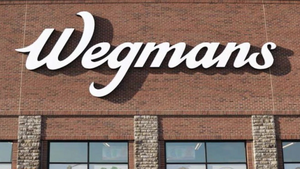A forum for contributed pieces from industry thought leaders, retailers, wholesalers and manufacturers. The views expressed are those of the authors.
3 essential pricing strategies grocers must master for 20253 essential pricing strategies grocers must master for 2025
When it comes to 2025 challenges—and opportunities—that retailers need to get right, there is one that looms larger than all the rest

Analyst firm Forrester recently released its 2025 predictions for retail, noting that 2025 will be tough for every retail sector—with the lowest-margin categories, such as grocery, having the hardest time.
Well, the last few years haven’t been a pleasure cruise, so if any sector is ready to take on whatever lies ahead, I’m confident grocers will rise to the challenge.
And when it comes to 2025 challenges—and opportunities—that retailers need to get right, there is one that looms larger than all the rest. And that is pricing.
Amid all this economic uncertainty, effective pricing and promotional tactics are crucial. Shoppers are laser-focused on maximizing value, with price becoming a primary factor in their purchasing decisions. For retailers, finding the right balance between profitability and price image is essential for customer acquisition and retention and business health. Strategic pricing combined with smart promotions can help grocers stand out in a crowded market, appeal to price-sensitive shoppers and foster long-term loyalty.
So, how can retailers get pricing right in 2025? It’s complex, to be sure, but I believe there are three “must master” pricing practices that will separate the grocery winners from the losers in 2025. Let’s dive in.
Invest in price perception. Not every retailer can or wants to be a Walmart or Aldi when it comes to offering extremely competitive pricing across the entire assortment. But that doesn’t mean you get a free pass from investing in your price perception. Perhaps you can’t offer the lowest prices on everything, but you can offer the most attractive prices on the items your customers care most about.
For a lot of retailers, investing in price perception starts with setting their item strategy and identifying key value items (KVIs), i.e., the products consumers care about most. As part of your item strategy, it’s equally important to figure out what items don’t drive price perception, i.e., background items, as those are the products that you can price less competitively to drive margin without having a negative impact on your price image.
While a focus on price image and KVIs is nothing new in the world of retail pricing, in 2025, consumer scrutiny on prices, coupled with severe margin pressures, is going to make the stakes much higher in finding the data-informed sweet spot of where to beat your competitors on price and where to preserve margin.
Leading retailers will leverage advanced analytics to determine the products their customers prioritize and how that differs by customer segment, region, channel, etc., and will invest aggressively to offer the most attractive pricing on those items.
Advance your promotions proficiency. It’s generally understood that approximately two-thirds of retail promotions are ineffective. It’s mind-boggling, right? Year after year, retailers spend incredible time and energy on something that often leads to reduced profits, wasted labor and missed sales opportunities. In 2025, retailers are going to have to clean up their promo act.
For many retailers, promotions planning lacks the data-driven maturity of the core pricing function. Plus, promotional strategy is often complicated by “a lot of cooks in the kitchen,” with multiple internal departments, including marketing and merchandising to supply chain and pricing, having some level of involvement, plus external pressures from vendors and how best to allocate vendor funds.
As with anything that needs improvement, measurement is the first step to more effective promotions.
Retailers should be assessing the core success metrics for a group of promotions or individual offers during the planning phase, while the offers are live, and again once the promotions are complete. That analysis needs to look at the holistic impact of the promotions across the store, considering affinity purchases, cannibalization, pantry loading and more.
In 2025, we’ll see more retailers tap AI and predictive analytics to get a better handle on promotions planning, optimization and management, including leveraging side-by-side scenario analysis tools that let them experiment with new promotions and anticipate the outcomes before those promotions even launch.
Prioritize pricing that moves with the market. During the second half of 2024, barely a week went by without another grocer announcing its rollout of electronic shelf labels (ESLs). While these digital tags have been popular in Europe for a while, they’re just starting to gain steam in the U.S. Of course, Walmart’s adoption of them played a large part of why more retailers are taking notice and evaluating how best to incorporate ESLs into their businesses.
Around the time of Walmart’s announcement, some media went wild with speculation about how ESLs would allow retailers to drive up prices – speculation that was completely unfounded, in my opinion.
I think every retailer—and certainly every pricer—knows that consumers are increasingly unwilling to shop with retailers that have consistently higher prices, opting instead for those offering better value and competitive deals.
Investments in ESLs are happening at record rates because retailers recognize that they need to be more competitive on price – if a competitor moves the price on a KVI, they want to match that price or beat it quickly, not wait a week until it’s their scheduled time for manual price tag changes.
Hand in hand with the wrong assumptions that ESLs are being used for rampant price increases is the inaccurate belief that these digital tags always mean dynamic pricing.
Being able to change prices faster doesn’t mean retailers are changing prices in real time. “Faster” is relative to each retailer; don’t assume that prices are changing every 15 minutes at every retailer that has embraced ESLs.
As Walmart noted in a blog post, “A price change that used to take an associate two days to update now takes only minutes with the new digital shelf labels system. This efficiency means we can spend more time assisting customers and less time on repetitive tasks.”
For grocers, 2025 is a year when efficiency and customer service take center stage, and those retailers that can move with the market and offer the most value-driven prices and optimized promos will be the ones that come out ahead.
About the Author
You May Also Like






